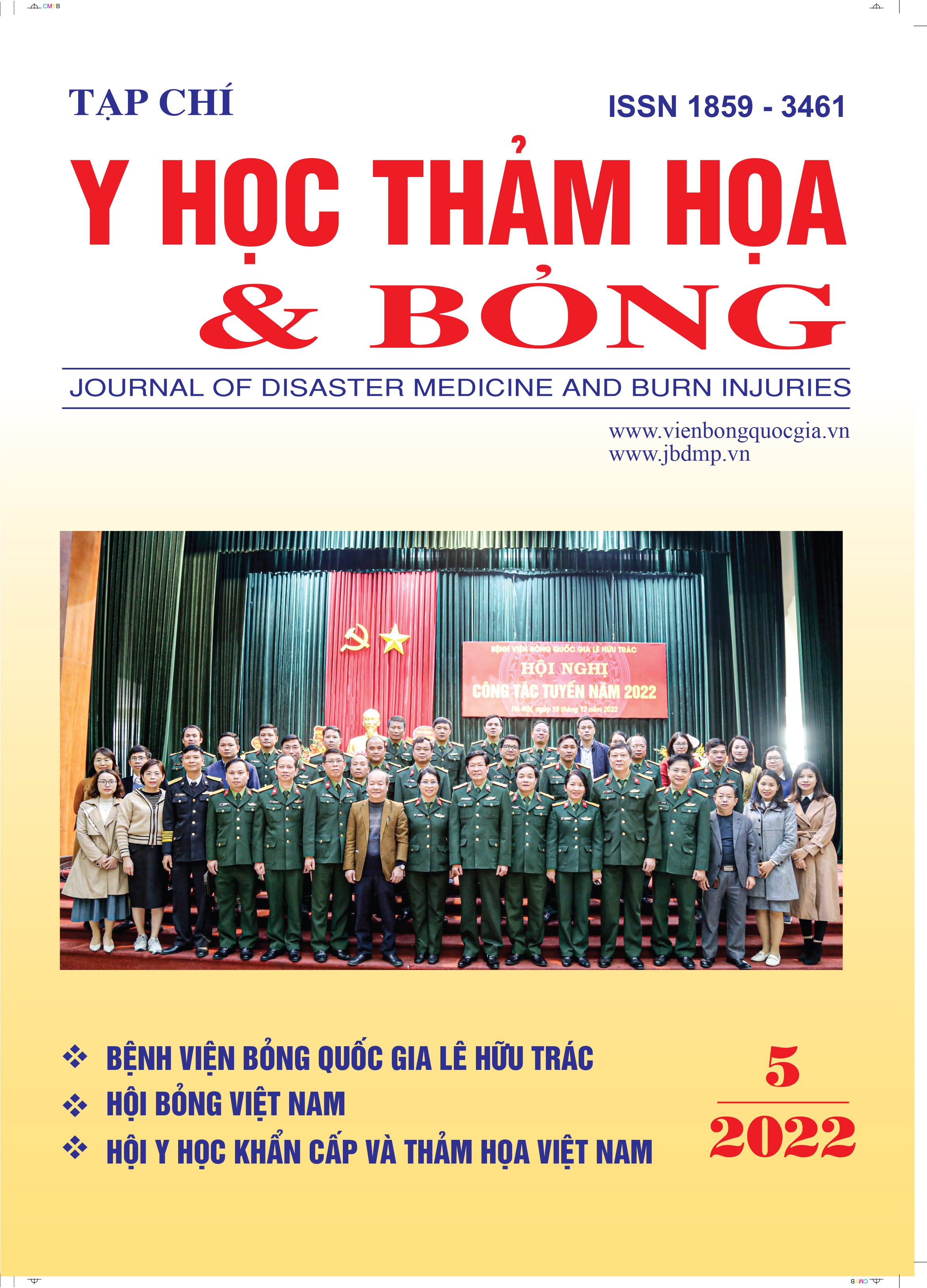Clinical report of mycobacterium abscessus after surgical aspiration combination of automatic code
Main Article Content
Abstract
Rapidly growing Mycobacterial skin and soft tissue infections are known to complicate cosmetic surgical procedures. Treatment consists of more surgery and prolonged antibiotic therapy guided by drug susceptibility testing. Paradoxical reactions occurring during antibiotic therapy can further complicate the treatment of non-tuberculous mycobacterial infections. We report a case of post-liposuction Mycobacterium abscessus surgical site infection in a returned medical tourist and the occurrence of paradox during treatment.
Article Details
Keywords
Mycobacterium abscessus
References
Torres J, Murillo J, Bofill L, et al. Rapidly growing mycobacterial infection following liposuction and liposculpture. Caracas, Venezuela, 1996-1998. MMWR 1998;47:1065-7.
2. Estivariz C. Brief report: nontuberculous mycobacterial infections after cosmetic surgery - Santo Domingo, Dominican Republic, 2003-2004. MMWR 2004;53:509.
3. Zosso C, Lienhard R, Siegrist HH, et al. Post liposuction infections by rapidly growing mycobacteria. Infect Dis (London, England) 2015;47:69-72.
4. Kothavade, R.J.; Dhurat, R.S.; Mishra, S.N.; Kothavade, U.R. Clinical and laboratory aspects of the diagnosis and management of cutaneous and subcutaneous infections caused by rapidly growing mycobacteria. Eur. J. Clin. Microbiol. Infect. Dis. 2013, 32, 161-188.
5. ISO. ISO 15883-4:2018, Washer-Disinfectors-Part 4: Requirements and Tests for Washer-Disinfectors Employing Chemical Disinfection for Thermolabile Endoscopes; ISO: Geneva, Switzerland, 2018.
6. ISO. ISO 14937:2009, Sterilization of Health Care Products-General Requirements for Characterization of a Sterilizing Agent and the Development, Validation and Routine Control of a Sterilization Process for Medical Devices; ISO: Geneva, Switzerland, 2009. 38. ISO. ISO 19458:2006, Water Quality-Sampling for Microbiological Analysis; ISO: Geneva, Switzerland, 2006.
7. Maurer F, Castelberg C, von Braun A, et al. Postsurgical wound infections due to rapidly growing mycobacteria in Swiss medical tourists following cosmetic surgery in Latin America between 2012 and 2014. Eurosurveillance 2014;19.
8. Griffith DE, Aksamit T, Brown-Elliot BA, et al. An official ATS/IDSA statement: Diagnosis, treatment and prevention of nontuberculous mycobacterial diseases. Am J Respir Crit Care Med 2007;175:367-416.
9. Vemulapalli RK, Cantey JR, Steed LL, et al. Emergence of resistance to clarithromycin during treatment of disseminated cutaneous M.chelonae infection: case report and literature review. J Infect 2001;43:163-8.
10. Sassi M, Drancourt M. Genome analysis reveals three genomospecies in Mycobacterium abscessus. BMC Genomics 2014;15:359.
11. Kothavade RJ, Dhurat RS, Mishra SN, Kothavade UR. Clinical and laboratory aspects of the diagnosis and management of cutaneous and subcutaneous infections caused by rapidly growing mycobacteria. Eur J Clin Microbiol Infect Dis. 2013;32:161-88.10.1007/s10096-012-1766-8.
12. Nakanaga K, Hoshino Y, Era Y, Matsumoto K, Kanazawa Y, Tomita A, et al. Multiple cases of cutaneous Mycobacterium massiliense infection in a “hot spa” in Japan. J Clin Microbiol. 2011;49:613-7. 10.1128/JCM.00817-10.
13. Furuya EY, Paez A, Srinivasan A, et al. Outbreak of Mycobacterium abscessus wound infections among lipo tourists from the United States who underwent abdominoplasty in the Dominical Republic. Clin Infect Dis 2008;46:1181-8.
2. Estivariz C. Brief report: nontuberculous mycobacterial infections after cosmetic surgery - Santo Domingo, Dominican Republic, 2003-2004. MMWR 2004;53:509.
3. Zosso C, Lienhard R, Siegrist HH, et al. Post liposuction infections by rapidly growing mycobacteria. Infect Dis (London, England) 2015;47:69-72.
4. Kothavade, R.J.; Dhurat, R.S.; Mishra, S.N.; Kothavade, U.R. Clinical and laboratory aspects of the diagnosis and management of cutaneous and subcutaneous infections caused by rapidly growing mycobacteria. Eur. J. Clin. Microbiol. Infect. Dis. 2013, 32, 161-188.
5. ISO. ISO 15883-4:2018, Washer-Disinfectors-Part 4: Requirements and Tests for Washer-Disinfectors Employing Chemical Disinfection for Thermolabile Endoscopes; ISO: Geneva, Switzerland, 2018.
6. ISO. ISO 14937:2009, Sterilization of Health Care Products-General Requirements for Characterization of a Sterilizing Agent and the Development, Validation and Routine Control of a Sterilization Process for Medical Devices; ISO: Geneva, Switzerland, 2009. 38. ISO. ISO 19458:2006, Water Quality-Sampling for Microbiological Analysis; ISO: Geneva, Switzerland, 2006.
7. Maurer F, Castelberg C, von Braun A, et al. Postsurgical wound infections due to rapidly growing mycobacteria in Swiss medical tourists following cosmetic surgery in Latin America between 2012 and 2014. Eurosurveillance 2014;19.
8. Griffith DE, Aksamit T, Brown-Elliot BA, et al. An official ATS/IDSA statement: Diagnosis, treatment and prevention of nontuberculous mycobacterial diseases. Am J Respir Crit Care Med 2007;175:367-416.
9. Vemulapalli RK, Cantey JR, Steed LL, et al. Emergence of resistance to clarithromycin during treatment of disseminated cutaneous M.chelonae infection: case report and literature review. J Infect 2001;43:163-8.
10. Sassi M, Drancourt M. Genome analysis reveals three genomospecies in Mycobacterium abscessus. BMC Genomics 2014;15:359.
11. Kothavade RJ, Dhurat RS, Mishra SN, Kothavade UR. Clinical and laboratory aspects of the diagnosis and management of cutaneous and subcutaneous infections caused by rapidly growing mycobacteria. Eur J Clin Microbiol Infect Dis. 2013;32:161-88.10.1007/s10096-012-1766-8.
12. Nakanaga K, Hoshino Y, Era Y, Matsumoto K, Kanazawa Y, Tomita A, et al. Multiple cases of cutaneous Mycobacterium massiliense infection in a “hot spa” in Japan. J Clin Microbiol. 2011;49:613-7. 10.1128/JCM.00817-10.
13. Furuya EY, Paez A, Srinivasan A, et al. Outbreak of Mycobacterium abscessus wound infections among lipo tourists from the United States who underwent abdominoplasty in the Dominical Republic. Clin Infect Dis 2008;46:1181-8.


